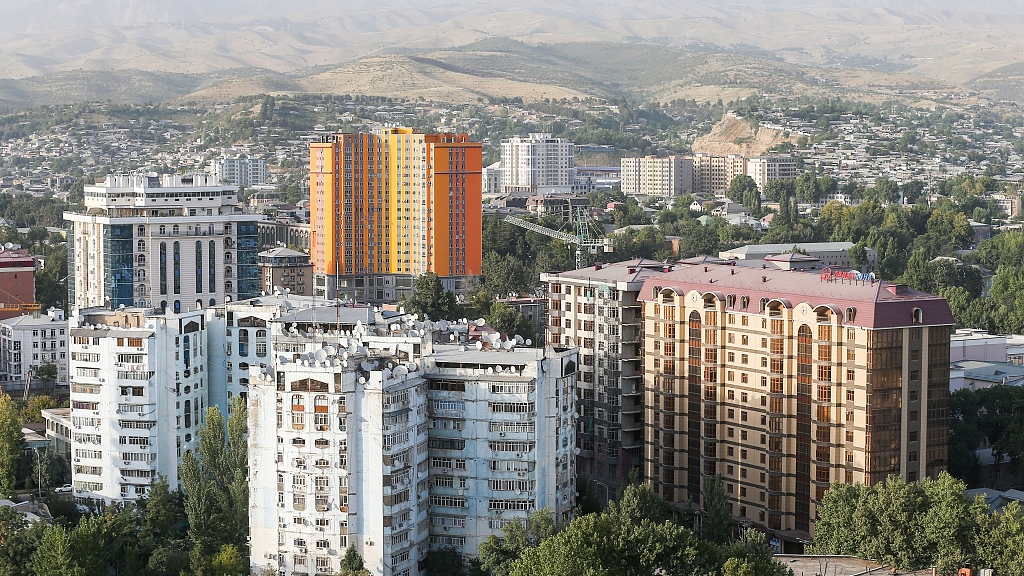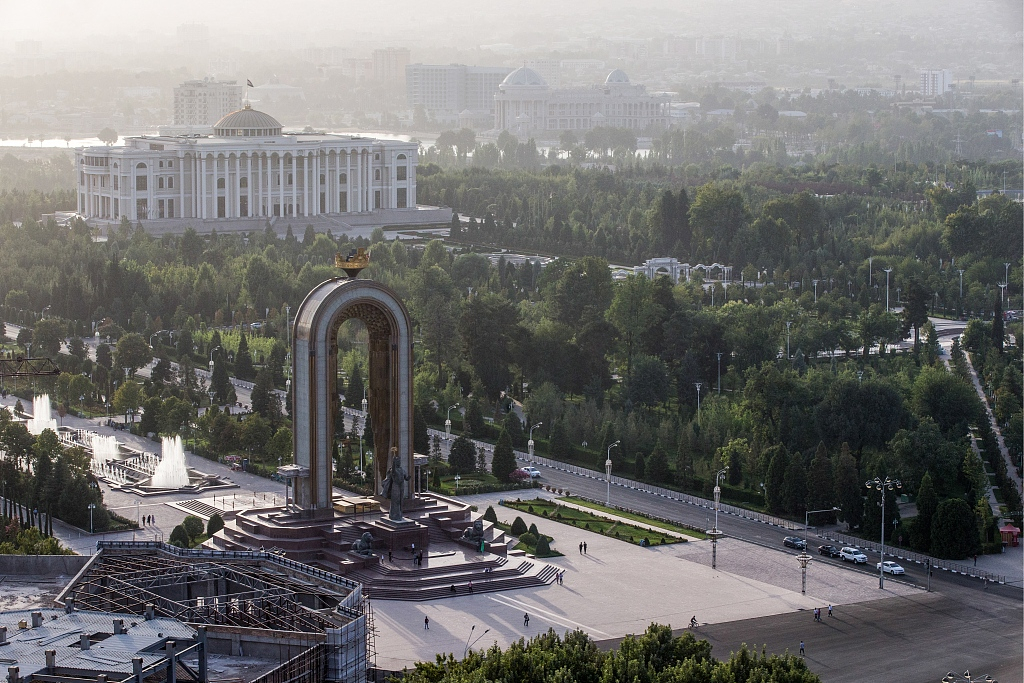

A view of the city of Dushanbe, Augest 10, 2018. /VCG Photo
Chinese President Xi Jinping's recent visit to Tajikistan comes five years after his first official visit to the Central Asian country. The two countries have made significant improvements together in recent years.
"The security and welfare of member countries is our common responsibility," said President Xi Jinping during his first official visit to Tajikistan in 2014.
Mountains and plateaus cover over 90 percent of Tajikistan's territory. The country's overreliance on agriculture, coupled with its domestic instability had previously pushed 80 percent of its people below the poverty line.
The situation began to improve as the nation put into action to boost energy supplies, transportation, and food security.

The monument of Isma'il ibn Ahmad, also known as Ismail Samani, (front) and the Palace of Nations (back left), the official residence of the president of Tajikistan. /VCG Photo
Tajikistan sits on an important point along the ancient Silk Road. It was among the first batch of countries to express interest in the Silk Road-inspired Belt and Road Initiative after President Xi proposed it 2013. The country's leaders believed the initiative could garner Chinese support for Tajikistan's needs.
In 2016, China helped Tajikistan build a power plant with the capacity to provide electricity and heating for over 700,000 residents around its capital Dushanbe. The same year also saw the completion of the Vahdat-Yovon Railway, which connects the country's central railways to those in the south.
The upgraded infrastructure also boosted trade. China's imports from Tajikistan jumped 71% last year as goods from Tajikistan attract more and more Chinese buyers.
But it's not all about business. Many people from Tajikistan have shown a growing interest in learning Chinese language and culture. Some of them even come to China to study.
China and Tajikistan established diplomatic ties in 1992. Since President Xi's visit to Dushanbe in 2014, China and its Central Asian neighbor have had exchanges every year. With this visit to the city, the two countries show their enduring relationship.

Copyright © 2018 CGTN. Beijing ICP prepared NO.16065310-3
Copyright © 2018 CGTN. Beijing ICP prepared NO.16065310-3